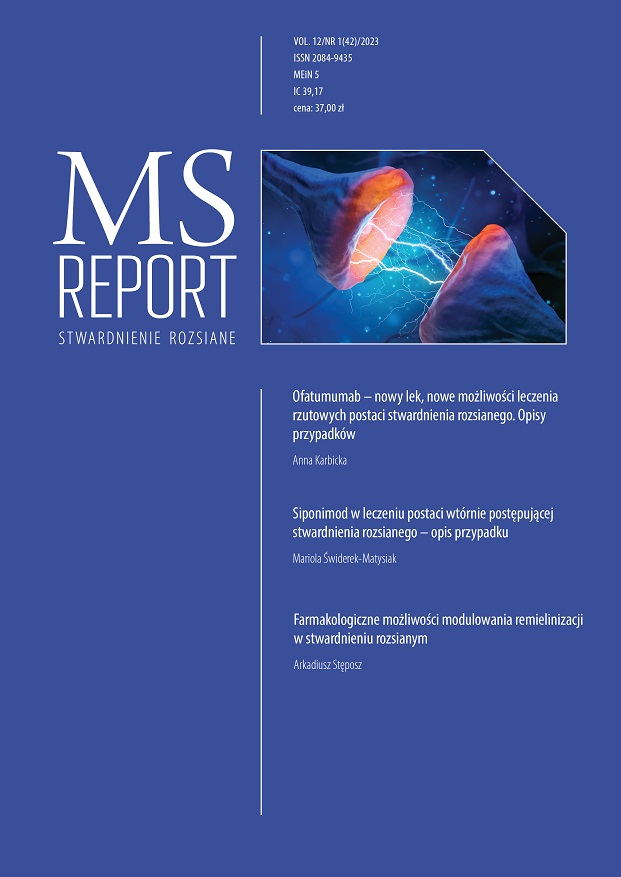Siponimod in the treatment of secondary progressive multiple sclerosis – a case report Case report
Main Article Content
Abstract
The described case presents a patient who was diagnosed with multiple sclerosis 16 years after the first neurological symptoms. In the first year of dimethyl fumarate treatment, there was one relapse with a return to previous neurological status, the brain magnetic resonance image was stable. In the next year of treatment, the patient experienced a relapse with a significant deterioration of disability, after treatment with steroids the patient improved, but the degree of disability increased. From then on, a gradual progression of disability independent of relapses was observed. The diagnosis of secondary progressive multiple sclerosis was established and siponimod therapy was started. The patient has been under observation for 24 months of treatment, stabilization of the neurological condition was achieved, the patient returned to social activity, no significant adverse events were observed.
Article Details
Copyright © by Medical Education. All rights reserved.
References
2. Lublin FD, Reingold SC, Cohen JA et al. Defining the clinical course of multiple sclerosis: the 2013 revisions. Neurology. 2014; 83: 278-86.
3. Kappos L, Bar-Or A, Cree BAC et al. Siponimod versus placebo in secondary progressive multiple sclerosis (EXPAND): a double-blind, randomized, phase-3 study. Lancet. 2018; 391: 1263-73.
4. Gold R, Piani-Meier D, Kappos L et al. Siponimod vs placebo in active secondary progressive multiple sclerosis: a post hoc analysis from the phase 3 EXPAND study. J Neurol. 2022; 269(9): 5093-104.
5. Ministerstwo Zdrowia. Programy lekowe (access: 11.05.2023).
6. Van Booven D, Marsh S, McLeod H et al. Cytochrome P450 2C9-CYP2C9. Pharmacogenet Genomics. 2010; 20(4): 277-81.

